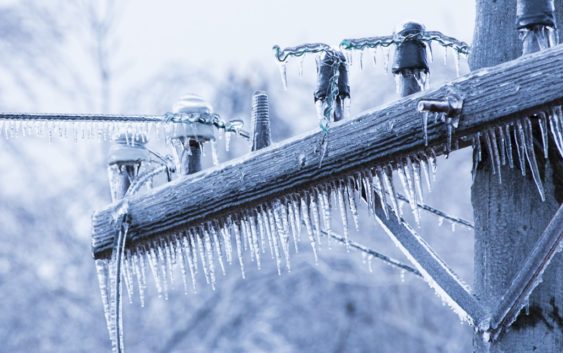- Recovery continues for western NC nearly two months after Hurricane Helene
- Recovery continues for western NC nearly three months after Hurricane Helene
- Cast of Scandal reunites to show support for western North Carolina after Hurricane Helene
- Tropical Storm Sara threatens to bring flash floods and mudslides to Central America
- Hurricane-stricken Tampa Bay Rays to play 2025 season at Yankees' spring training field in Tampa
How to prepare for severe weather like Brad Panovich

A winter storm will bring freezing rain and ice to the Charlotte, North Carolina region Thursday. This guide will help you be prepared before the storm him.
CHARLOTTE, N.C. — The Carolinas are preparing for a winter storm that will bring freezing rain and icy conditions to the Charlotte area Thursday.
First Warn forecaster Larry Sprinkle said some areas north of Charlotte may see up to a half-inch of ice with most parts of the WCNC Charlotte viewing area getting at least a glaze of ice.
These totals may not sound like much, but any accumulation could led to fallen limbs, downed power lines, power outages and dangerous road conditions.
Electric companies in the mountains, foothills and Piedmont are gearing up for the storm and will have crews ready to restore power if necessary.
How to report a power outage
Blue Ridge Energy: There are three ways customers in Alexander, Ashe, Avery, Caldwell and Watauga counties can report power outages.
- Call 1-800-448-2383
- The Blue Ridge Energy Mobile App
- Text alerts. Customers can text START to 70216. From there, text OUT to 70216 anytime to report an outage.
Duke Energy: To report a power outage to Duke Energy, call 1-800-769-3766. You can also report outages online by clicking here. The same number can be used to report downed power lines in your area.
Driving in Winter Weather
The North Carolina Department of Transportation actively plans for inclement weather and has crews working to treat roads ahead of storms. The only way to totally prevent a wreck is to stay off the roads, but if you must travel, NCDOT recommends the following safety tips:
- You should have a supply kit with an ice scraper, snow brush, jumper cables and a basic tool kit.
- Always carry an emergency supply kit with a flashlight, first aid kit, blankets, shovel, sand (for traction in ice) and drinking water.
- Be sure you always have at least a half-tank of fuel in case stores are closed.
- Do not use cruise control and never speed in wintry conditions. Speeding is the No. 1 cause for wrecks in winter weather.
- Approach bridges and overpasses with caution. These areas are more likely to have ice accumulation. Do not use your brakes while on a bridge.
- Clear as much ice or snow from your vehicle before you leave. Loose snow could fly off your car into another vehicle or obstruct your view.
Black Ice
Appearing like wet spots on the road, black ice is typically caused by melting snow or ice that refreezes into thin layers. Most of the time, drivers won’t notice until it’s too late.
If you encounter a frozen road or patch of black ice, you should report it to local law enforcement as soon as possible. Authorities will then contact NCDOT for treatment of the area and monitor it during future winter weather events.
Home Supply Kit
First Warn chief meteorologist Brad Panovich says it’s important to keep an emergency supply kit on hand in the case of severe weather. Many of these supplies can be kept year-round for hurricanes, tornadoes or flooding. You should try to keep the following items in your house:
- A flashlight with extra batteries
- A battery-powered weather radio to receive emergency updates
- Extra non-perishable foods and bottled water. This water can be used for brushing your teeth, cleaning, etc.
- First aid kit
- Extra medicines and baby necessities
- Emergency heating sources, such as a space heater, wood stove or fireplace.